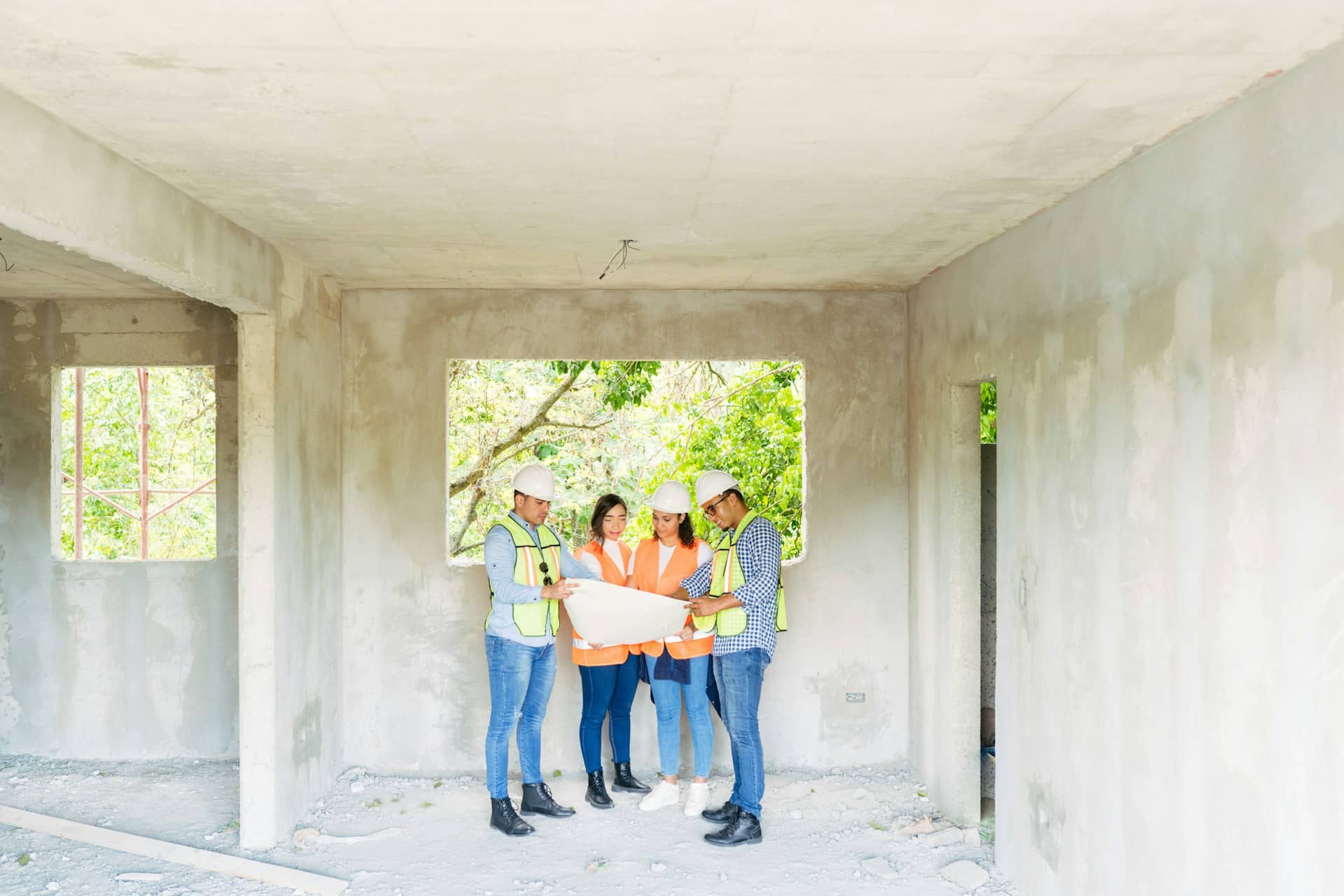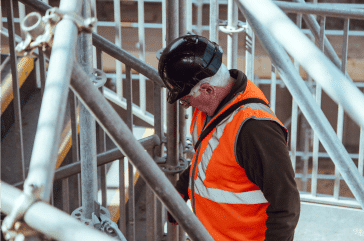Residential Course of Construction insurance is vital for any new home building project. This type of insurance covers homes under construction, protecting against various risks that can occur before the project is completed. Understanding this coverage is essential for brokers who want to offer the best advice to their clients in the construction industry.
By understanding the critical aspects of the Residential Course of Construction insurance, brokers can help clients avoid costly mistakes and protect their construction projects. This article will explain the basics of this insurance, its essential coverages, shared risks and claims, and offer tips for brokers to help clients choose the right policy.
Understanding Residential Course of Construction Insurance
Residential Course of Construction insurance, often called builder’s risk insurance, covers homes and residential properties while being built. This insurance protects against physical loss or damage to the property during the construction phase. It’s essential because construction sites are vulnerable to risks, leading to significant financial losses if not adequately insured.
This type of insurance typically covers materials, fixtures, and equipment used in construction. It ensures that the project continues smoothly despite unexpected setbacks. It’s tailored to meet the specific needs of residential builders and homeowners, providing peace of mind during a highly critical phase of property development.
Brokers should be well-versed in Residential Course of Construction insurance to offer valuable advice to their clients. Understanding its scope and benefits allows brokers to recommend comprehensive insurance solutions. This knowledge helps ensure that construction projects are adequately protected from start to finish, avoiding costly interruptions and timely completion.
Essential Coverages in Residential Course of Construction Policies
Residential Course of Construction policies include several key coverages that address specific risks in construction projects. Here are some essential coverages brokers should be aware of:
1. Property Damage: Covers damages to the building under construction from events like fire, wind, theft, and vandalism. This is crucial for protecting the significant investment in building materials and labour.
2. Soft Costs: This coverage includes expenses that are not directly related to physical construction but are still impacted by delays, such as architectural fees, interest on loans, and legal expenses. It helps manage the additional costs incurred due to project interruptions.
3. Equipment Breakdown: This coverage protects against the sudden and accidental breakdown of construction equipment. It ensures that the project continues smoothly, even when the machinery fails.
4. Transit and Off-Site Storage: Covers materials and equipment in transit to the construction site or stored at off-site locations. This is vital for safeguarding assets before they reach the construction site.
5. Debris Removal: This coverage covers removing debris after an insured event, such as a fire or storm. Cleaning up after such incidents can be costly, making this coverage essential.
6. Water Damage: This coverage protects against damage caused by water, including heavy rainfall or burst pipes. Construction sites are particularly vulnerable to water issues, so this coverage is essential.
Brokers need to understand these coverages to match their client’s needs accurately. By ensuring all potential risks are covered, brokers can help clients avoid financial setbacks and maintain project timelines.
Common Risks and Claims in Residential Construction Projects
Construction projects come with unique risks and potential claims. Understanding these common risks helps brokers provide accurate guidance to their clients, ensuring they choose the proper coverage.
1. Theft and Vandalism: Construction sites often face theft and vandalism since materials and equipment can be attractive targets. Thieves may steal valuable items, causing significant financial setbacks. Additionally, vandalism can delay project timelines and increase costs.
2. Weather-Related Damage: Extreme weather conditions like heavy rainfall, wind, and snow can damage partially constructed buildings. Water damage from leaks or floods can also destroy materials and delay the project, making weather-related coverage essential.
3. Fire: Fires can occur due to malfunctioning equipment, electrical issues, or arson. This risk can result in extensive damage and require substantial funds for repair or rebuilding. Having fire coverage is crucial for protecting the investment.
4. Accidents and Injuries: Construction sites are prone to accidents that can injure workers or third parties. While other forms of insurance typically cover worker injuries, any damage to the site or materials needs specific coverage under the Residential Course of Construction policy.
5. Defective Workmanship: Mistakes in construction due to defective materials or poor workmanship can lead to costly repairs. Policies might cover such defects, ensuring financial protection against claims arising from these issues.
Knowing these risks allows brokers to highlight the importance of comprehensive coverage to clients. Adequate protection ensures that projects proceed smoothly even when unexpected events occur.
Tips for Brokers to Help Clients Choose the Right Coverage
Helping clients select the suitable Residential Course of Construction insurance involves understanding their needs and risks. Here are some practical tips for brokers:
1. Assess the Scope of the Project: Before recommending a policy, it’s essential to understand the size and scope of the construction project. Larger projects require more extensive coverage, while smaller builds need less.
2. Evaluate Potential Risks: Brokers should assess the risks associated with the project’s location, type, and materials. This helps tailor the coverage to address the most probable risks effectively.
3. Understand Policy Exclusions: It’s crucial to review the exclusions in any policy. Brokers should ensure clients know what is not covered and suggest additional policies to fill gaps.
4. Compare Different Policies: Not all insurance products are the same. Brokers should compare different Residential Course of Construction policies from various providers to find the best fit for their client’s needs and budgets.
5. Educate Clients on Coverage Benefits: Clients may not fully understand the importance of certain coverages. Brokers should educate them about the benefits and protections provided, showing how it safeguards their investment.
6. Suggest Regular Reviews: Construction projects can change over time. Brokers should recommend regular policy reviews to ensure adequate coverage as the project progresses.
Providing these tips ensures clients have an insurance plan that thoroughly protects their construction projects, giving them peace of mind and financial security.
Conclusion
Residential Course of Construction insurance is a critical component of any home-building project. This coverage safeguards against risks that can cause significant delays and financial losses. By understanding the essential coverages and shared risks, brokers can better guide their clients in selecting the right policies. Tailoring coverage to the specific needs of a project ensures comprehensive protection.
At Approved Casualty & Surety, we provide a wide range of builders’ risk insurance in Ontario to help brokers offer the best solutions to their clients. Our products are designed to meet the unique needs of construction projects.
Contact Approved Casualty & Surety today to learn more about how we can help you offer the best insurance solutions to your clients.
”Disclaimer: The information provided in this article is intended for illustrative purposes only and should not be considered as actual insurance advice. Our articles offer insights and general guidance on various insurance topics however, they do not substitute professional advice tailored to your specific circumstances. For expert, personalized insurance advice and solutions, please contact our licensed insurance brokers.”







